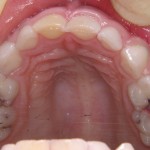
Despite improvements in dental health tooth decay remains one of the most common diseases of childhood. Decay in the primary dentition can progress rapidly to involve the pulp requiring pulp treatment techniques. Three main approaches are available depending on the severity of disease direct pulp capping, pulpotomy and pulpectomy combined with one of a range of medicaments (mineral trioxide aggregate (MTA), calcium hydroxide, formocresol or ferric sulphate).
This is an update of an earlier Cochrane review and aims to assess the effects of different pulp treatment techniques and associated medicaments for the treatment of extensive decay in primary teeth.
Methods
Searches were conducted in the Cochrane Oral Health Group’s Trials Register, the Cochrane Central Register of Controlled Trials (CENTRAL), Medline, Embase, the Web of Science, OpenGrey the US National Institutes of Health Trials Registry (ClinicalTrials.gov) and the World Health Organization International Clinical Trials Registry Platform databases. There were no restrictions on the language or date of publication.
Randomised controlled trials (RCTs) comparing interventions that combined a pulp treatment technique with a medicament or device in children with extensive decay in the dental pulp of their primary teeth were considered. The primary outcomes were clinical failure and radiological failure, as defined in trials, at six, 12 and 24 months
Two independent reviewers selected studies, extracted data and assessed risk of bias using the Cochrane domain-based evaluation process. Dichotomous outcomes were expressed as risk ratios (RR) with 95% confidence intervals (CIs). Continuous outcomes using the same scale were presented as means with 95%CIs, and for those using different scales standardised mean difference (SMD) and 95% CIs. Data-synthesis used pair-wise meta-analyses and fixed-effect models.
Results
- 87 trials (7140 randomised teeth) were included.
- All trials were either at unclear or high risk of bias (59% and 41% respectively).
- The 87 trials examined 125 different comparisons: 75 comparisons of different medicaments or techniques for pulpotomy; 25 comparisons of different medicaments for pulpectomy; four comparisons of pulpotomy and pulpectomy; and 21 comparisons of different medicaments for direct pulp capping.
- Pulpotomy
- 3 comparisons provided moderate-quality evidence.
- Compared with formocresol, MTA reduced both clinical and radiological failures, with a statistically significant difference at 12 months for clinical failure and at six, 12 and 24 months for radiological failure (12 trials, 740 participants).
- Compared with calcium hydroxide, MTA reduced both clinical and radiological failures, with statistically significant differences for clinical failure at 12 and 24 months. MTA also appeared to reduce radiological failure at six, 12 and 24 months (four trials, 150 participants) (low-quality evidence).
- Comparing calcium hydroxide with formocresol, there was a statistically significant difference in favour of formocresol for clinical failure at six and 12 months and radiological failure at six, 12 and 24 months (six trials (one with no failures), 332 participants).
- Pulpectomy
- There was moderate-quality evidence for two comparisons.
- The comparison between Metapex and zinc oxide and eugenol (ZOE) paste was inconclusive, with no clear evidence of a difference between the interventions for failure at 6 or 12 months (two trials, 62 participants).
- Similarly inconclusive, there was no clear evidence of a difference in failure between Endoflas and ZOE (outcomes measured at 6 months; two trials, 80 participants).
- There was low-quality evidence of a difference in failure at 12 months that suggested ZOE paste may be better than Vitapex (calcium hydroxide/iodoform) paste (two trials, 161 participants).
- Direct pulp capping
- The quality of the evidence is low to very low. One trial favoured formocresol over calcium hydroxide but there are safety concerns about formocresol.
Conclusions
The authors concluded: –
Pulp treatment for extensive decay in primary teeth is generally successful. Many included trials had no clinical or radiological failures in either trial arm, and the overall proportion of failures was low. Any future trials in this area would require a very large sample size and follow up of a minimum of one year.
The evidence suggests MTA may be the most efficacious medicament to heal the root pulp after pulpotomy of a deciduous tooth. As MTA is relatively expensive, future research could be undertaken to confirm if Biodentine, enamel matrix derivative, laser treatment or Ankaferd Blood Stopper are acceptable second choices, and whether, where none of these treatments can be used, application of sodium hypochlorite is the safest option. Formocresol, though effective, has known concerns about toxicity.
Regarding pulpectomy, there is no conclusive evidence that one medicament or technique is superior to another, and so the choice of medicament remains at the clinician’s discretion. Research could be undertaken to confirm if ZOE paste is more effective than Vitapex and to evaluate other alternatives.
Regarding direct pulp capping, the small number of studies and low quality of the evidence limited interpretation. Formocresol may be more successful than calcium hydroxide; however, given its toxicity, any future research should focus on alternatives.
Comments
This review updates the 2014 version of this Cochrane review (Dental Elf – 14th Aug 2014) including another 40 RCTs. However, despite the large increase in the number of available trials there are still concerns over with the primary research. Given the high success rates of the treatment approaches ( many of the included studies reported no failures in either study arm) the available studies are small. There are also concerns with the large variation in reported outcomes with 78 different outcomes being reported. Developing consensus on the most relevant outcomes would help research in this field. The reviewers also recommend that future studies are large with longer follow-up periods of one year or longer
Links
Primary Paper
Smaïl-Faugeron V, Glenny AM, Courson F, Durieux P, Muller-Bolla M, Fron Chabouis H. Pulp treatment for extensive decay in primary teeth. Cochrane Database of Systematic Reviews 2018, Issue 5. Art. No.: CD003220. DOI: 10.1002/14651858.CD003220.pub3.
Other references
Dental Elf – 14th Aug 2014
